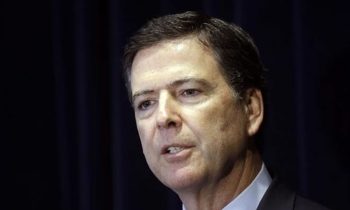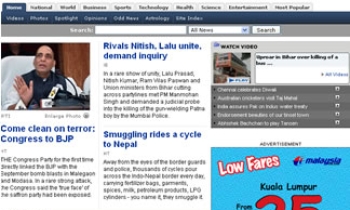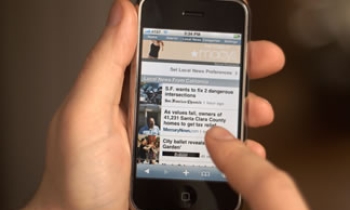Talks between the broadcast networks and cable operators to bring prime-time entertainment shows to video-on-demand platforms are beginning to take on a more serious tone. There’s a strong chance that some networks could launch on-demand services on some systems as early as next summer and almost certainly by the start of the 2006-07 season.
What’s fueling this new sense of urgency is the broadcasters’ desire to come up with a new revenue stream as the costs of producing scripted shows continue to soar. Meanwhile, cable operators are concerned that if they do not have these deals in place sooner than later, broadcasters will instead look to the Internet as a plausible VOD vehicle (thanks in part to the explosion of broadband penetration).
How high a priority is it? Disney CEO Bob Iger recently met with Comcast chief executive Brian Roberts, according to sources, to see what needed to be put on the table to get a VOD deal done between the No. 1 cable operator and Disney-owned ABC. And Viacom co-president and co-COO Leslie Moonves has been meeting with financial analysts, touting the positives of offering CBS’ prime-time lineup to viewers via VOD.
Meanwhile, CBS has been in contact with Nielsen Media Research to find out what kind of ratings and demographic information can be assembled on VOD viewership. "This is a potential new money pit we are sitting on, and we want to take advantage of it," said one executive inside CBS. "Leslie believes that we should offer people our content in as many ways as possible and let them decide how they want to receive it."
David Poltrack, executive vp of research at CBS, said, "If we are going to sell our product, we want it in as many stores as possible."
How soon will it be before broadcast prime-time VOD is offered on the major cable operators? No network executive is willing to say for sure. But Poltrack, who has been spearheading viewer research on VOD for the past several years, said that while the networks and cable operators are struggling to come up with the best business model, "VOD for prime-time shows is coming. It will be out there in some form fairly soon."
CBS has been the most publicly vociferous in sharing its research data and ideas about the best way to finance it. Poltrack said an à la carte model that offers viewers a two-tier option to purchase seems to be the most feasible. Under that plan, viewers would pay $1 per show and have the ability to fast-forward through commercials or pay 50 cents without that option.
Poltrack said CBS surveys show that the average TV viewer would purchase about 100 hours of VOD programming per year; that same viewer watches 1,000 hours of TV in that span. "Losing 10 percent of their viewing to VOD is not going to hurt the [ratings] integrity of the free product that much," he said. And the revenue drawn from the VOD should offset the ad dollars lost by lower ratings.
CBS has already overcome one of the major hurdles to pursuing entertainment VOD: digital rights. Although Poltrack would not comment, CBS insiders said the network worked language into its deals for shows that premiered last year or this season that spells out how VOD revenue would be split among the studio, show talent and the network. For veteran shows, new language is still being worked on.
Poltrack believes that for VOD to really take hold among viewers, all the networks must be involved. The more top-rated shows that are offered on VOD platforms, the more viewers will be driven to those platforms, he said.
J.B. Perrette, senior vp, new media, and CFO of NBC Universal Cable, who is spearheading the VOD efforts for his company, said NBC offered Comcast some of its broadcast and cable shows for its VOD platform to run for free, but Comcast did not want to share any additional costs the network had to pay in rights fees, so the deal fell through.
"Comcast had said it wanted to offer a free VOD platform to viewers," Perrette said. "We told Comcast we would be willing to offer shows like Law & Order: SVU, Law & Order: Criminal Intent, Las Vegas, Monk and Battlestar Galactica for them to run for free, but there is a rights-fee cost to us to pay to talent, for music and things like that, and we wanted them to share some of that cost."
Now, Perrette said, NBC will probably also look to a pay-per-view model. "We are in discussions with all the major operators," he said, "and open to any economic model that works."
But media analyst Bruce Leichtman has some doubts about viewers agreeing to pay for broadcast repeats in VOD. "On demand has grown through delivering free programming," said Leichtman. "Consumers have not necessarily shown a willingness to pay for programs."
Still, cable operators want more content to drive viewers to VOD platforms, because VOD requires subscribers to upgrade to higher-margin digital services (and provides a service satellite companies like News Corp.’s DirecTV cannot). And broadcasters, whose programming still draws the greatest number of viewers to its programming, can fill the bill there.
CBS is willing to roll out its VOD service one MSO at a time, meaning if that first deal can get done–and it proves to be economically viable–other operators may be spurred to jump on board. And if Poltrack’s research numbers hold true, with each viewer who uses VOD paying for 100 hours a year, suddenly there’s a whole new revenue stream for all parties to divvy up.









